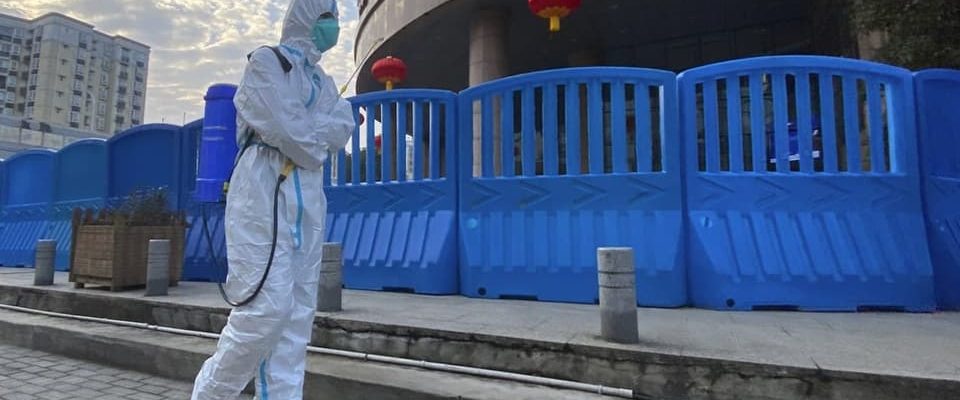Contents
China has withheld information on the possible natural origin of the virus. The WHO calls the lack of transparency “inexcusable”.
It is no coincidence that the WHO is demanding more transparency right now. A few weeks ago it was announced that there are samples from the Huanan Animal Market in Wuhan, which clearly show that three years ago, not only was there a lot of coronavirus there, but also animals were kept in cages or sold as meat that contracted the virus and can pass it on. For example raccoon dogs.
Legend:
A Chinese health worker outside the hospital in Wuhan.
AP Photo/Ng Han Guan
The Huanan market in the middle of the metropolis of Wuhan was at the center of the first corona outbreak: “The cases that are known are all clustered around this market,” says the Bernese virologist Volker Thiel. He has been researching on and with the corona virus since the beginning of the pandemic.
Coincidental discovery of data, great gain in knowledge
So-called environmental samples have now appeared. The genetic data that can be read from these samples was available online on the GISAID research server for a short time, uploaded by Chinese researchers from the CCDC epidemic institute there. The French researcher Florence Débarre discovered them on the server by accident and then evaluated them with colleagues.
I would be surprised if China doesn’t want to know for itself where the infections come from.
These are samples that were taken in the Huanan market three years ago, immediately after the outbreak of the pandemic: Swabs from walls, cages, in drains, so-called environmental samples. Now it’s clear: China has had this revealing data all along and withheld it from the world.
The WHO now reacts in the journal “Science” unusually clear, calls for more transparency and condemns the lack of it. “I can imagine that the WHO feels fooled,” says Thiel. And further: “I would be surprised if China does not want to know for itself where the infections come from.”
You still don’t know everything
China is a modern research country and has the technical capabilities and knowledge to search for information in the right place using the right methods. Where it is worth looking for is almost self-evident from the point of view of virology. Thiel says: “I can’t know for sure, but I think other samples were taken that we don’t know about yet.”
On live animals at the market, for example, on farms in the outskirts of the city. Thiel: “And if there is a suspicion that the virus was on certain farms, how did it get there?” Connections to wild animals would have to be clarified, Thiel continued.
I can imagine that the WHO is very disappointed.
The WHO now emphasizes, at least between the lines, that China can hardly pretend that there are no relevant samples at all of these obvious places and times. “It’s unusually clear. And I can also imagine that the WHO is very disappointed. People probably thought that China was relatively open, »says Thiel. However, this does not appear to be the case.
“The virus was there”
The WHO also emphasizes that key details are still missing about the work being done at the Wuhan Institute of Virology. The call on China to work transparently with other countries and the WHO is therefore aimed at both possible starting points for the pandemic: the market and the laboratory.
The current state of knowledge can be summarized as follows: “We have clear evidence that the virus was in this market. We also know that the animals that are susceptible to the virus were also there, »says the virologist Thiel.
